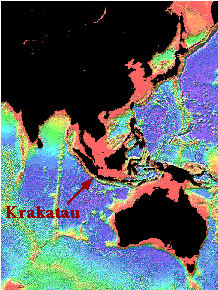This is a map of the ocean floor.
Click on image for full size
Image from: NOAA/NESDIS/National Geophysical Data Center, Boulder, CO
Krakatoa
One of the most powerful volcanic explosions in the history of the world occured at Krakatoa in the last century.
Krakatoa was formerly a volcanic island found in the strait between Java and Sumatra. It was located near a region where the Indo-Australian plate subducts under the Eurasian plate.
In May, 1883, a series of eruptions commenced which continued until August 27, 1883, when a cataclysmic explosion blew the island apart.
It is believed that the large explosion was due to super-hot steam, which was created when the walls of the volcano ruptered and allowed ocean water into the magma chamber. Explosions of steam, of which Krakatoa is the ultimate example, are known as "Phreatic" eruptions.
The island exploded with the force of 100 megatons (the Hiroshima bomb was about 20 kilotons). The explosion was heard as far away as Madagascar (2,200 miles). Ash from the explosion rose 50 miles in altitude, into the stratosphere, where it affected weather patterns for the next year. Large amounts of ash which reach the stratosphere can have a cooling effect on weather because the ash remains in the sky and reduces the amount of sunlight reaching the surface. Tsunamis from the explosion were raised to 131 ft, destroying 163 villages along the coast of Java and Sumatra, and drowning 36,000 people.
You might also be interested in:
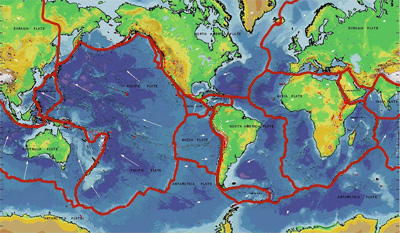
Many forces cause the surface of the Earth to change over time. However, the largest force that changes our planet's surface is the movement of Earth's outer layer through the process of plate tectonics.
...more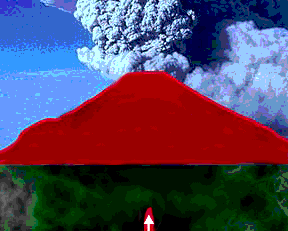
Volcanoes form when hot material from below risesand leaks into the crust. This hot material, called magma, comes either from a melt of subducted crustal material, which is light and buoyant after melting,
...more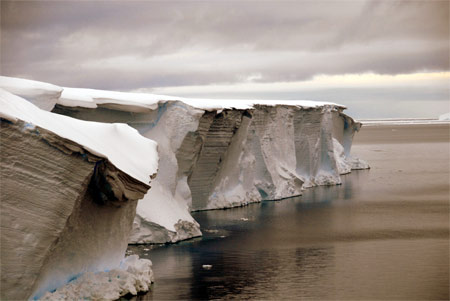
Looking for online content that can be used for a climate change education course or module? Pages linked below can be used to support an introductory climate change education for either a unit or a full
...more
Ash is made of millions of tiny fragments of rock and glass formed during a volcanic eruption. Volcanic ash particles are less than 2 mm in size and can be much smaller. Volcanic ash forms in several ways
...more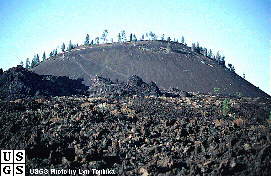
Cinder cones are simple volcanoes which have a bowl-shaped crater at the summit and rarely rise more than a thousand feet above their surroundings. They usually are created of eruptions from a single vent,
...more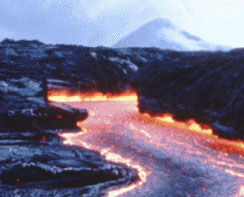
Lava can move in broad flat lava flows, or it can move through constrictive channels or tubes. Lava flows have a large surface area so they tend to cool quickly and flow slowly. The fastest unconstricted
...more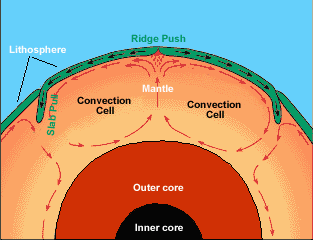
Earth’s center, or core, is very hot, about 9000 degrees F. This heat causes molten rock deep within the mantle layer to move. Warm material rises, cools, and eventually sinks down. As the cool material
...more


